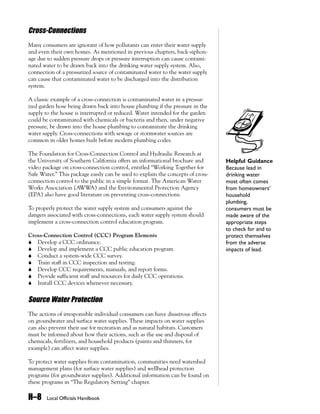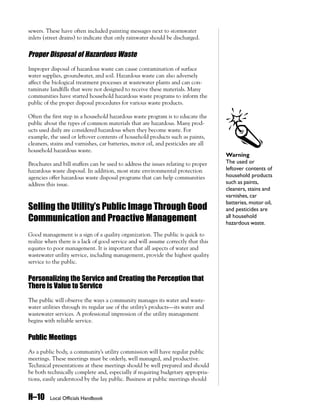The document discusses several key aspects of public relations for water and wastewater utilities:
1) It is important for utilities to develop positive relationships with the public and local officials to gain trust and support for water and wastewater services. Utilities must ensure safe drinking water, wastewater treatment, and quality service at a fair price.
2) Utilities must educate the public on the complex operations of water and wastewater systems and provide opportunities for meaningful public input. This includes public education programs and processes for public participation.
3) Utilities must establish fair and responsible user rate structures that allow for proper operations, maintenance, equipment replacement and improvements while not being unreasonably high for customers. Rates













